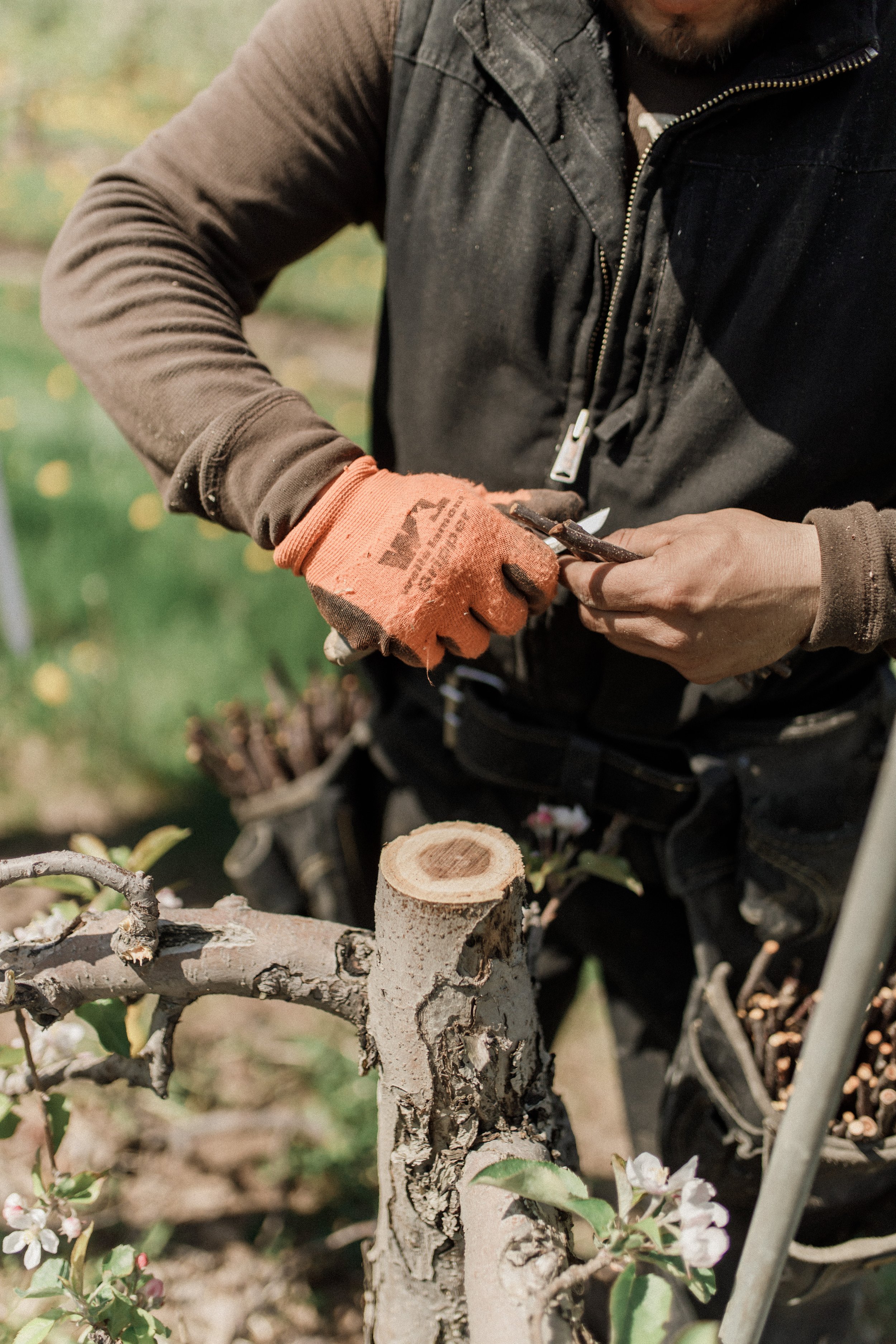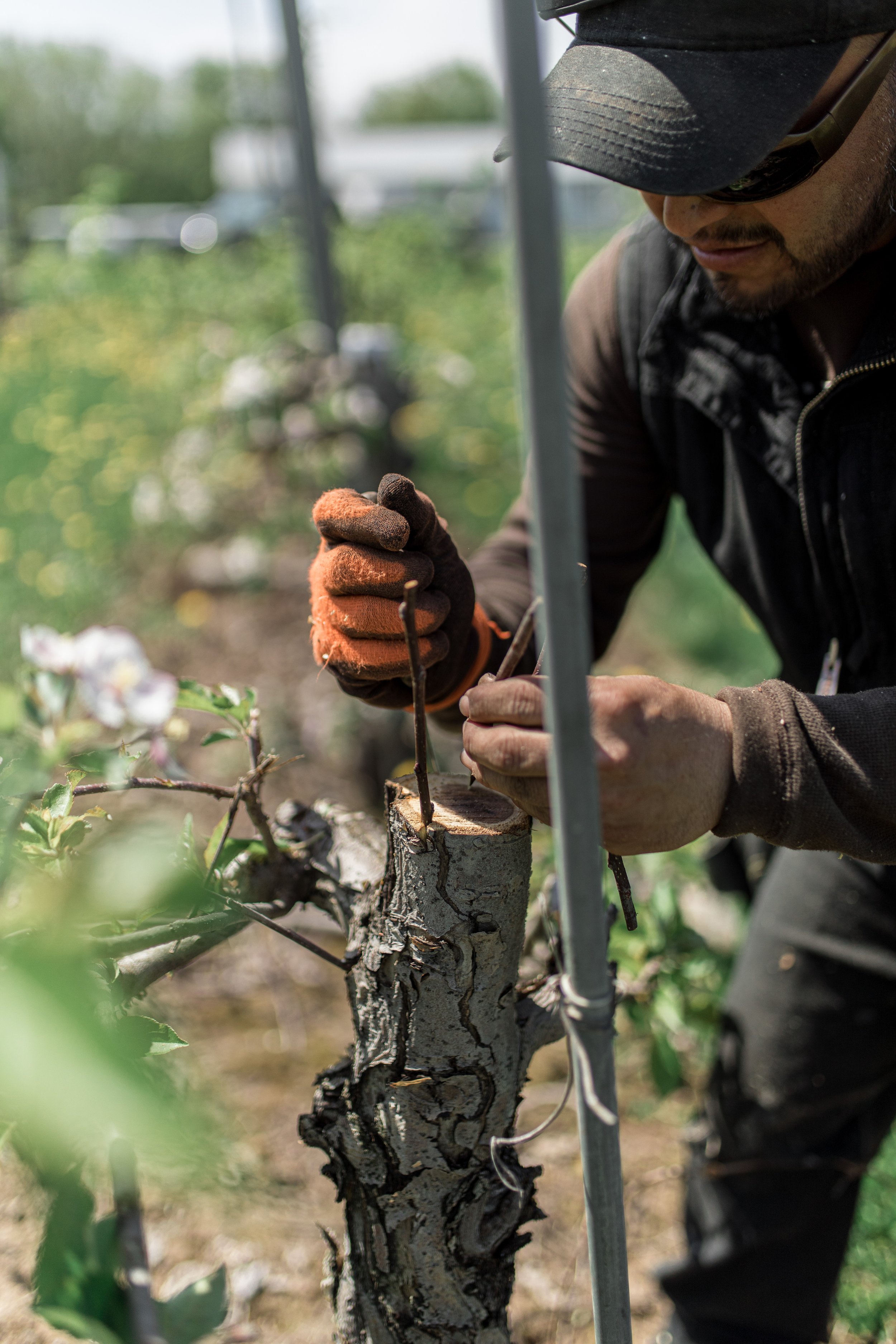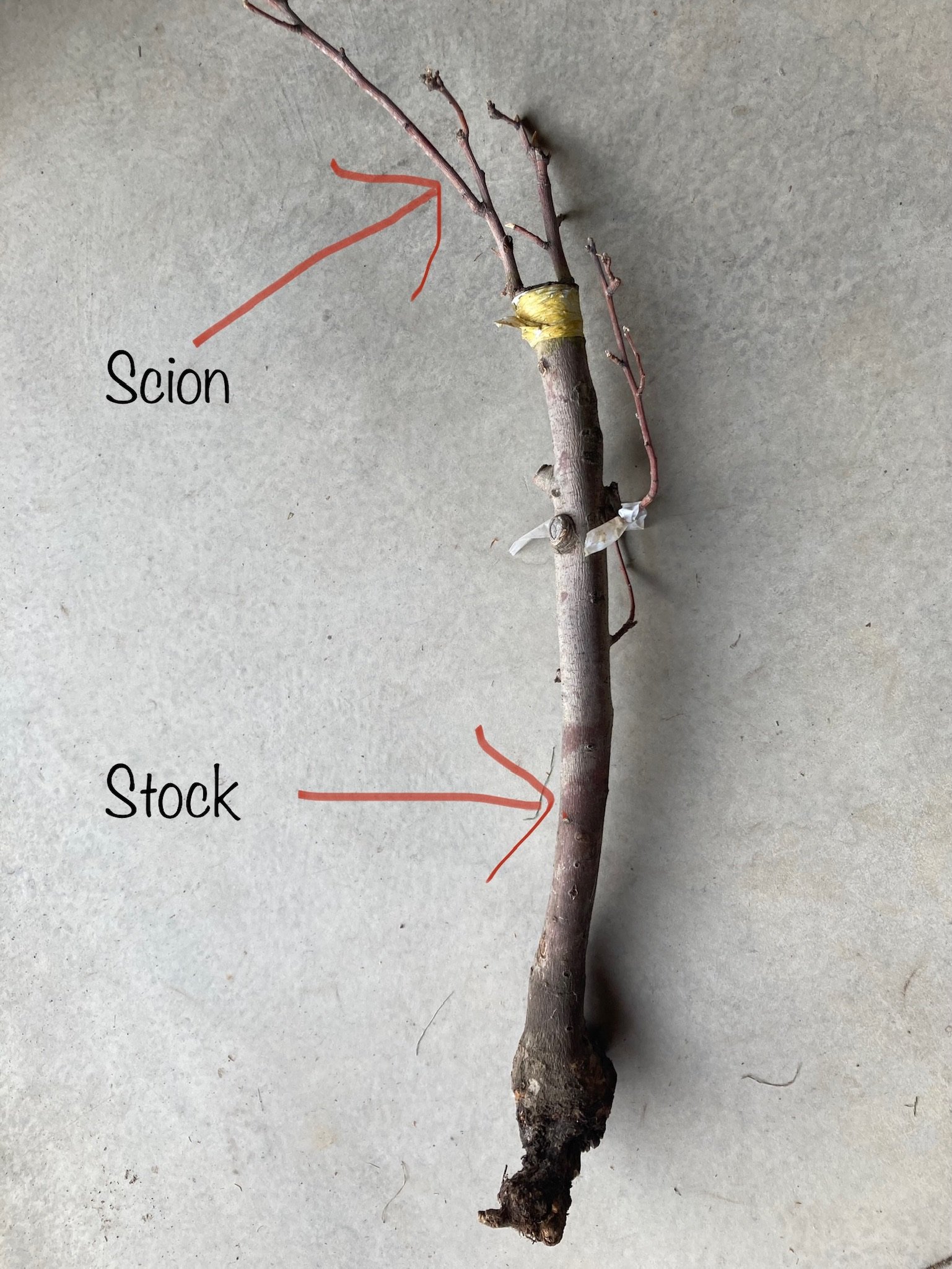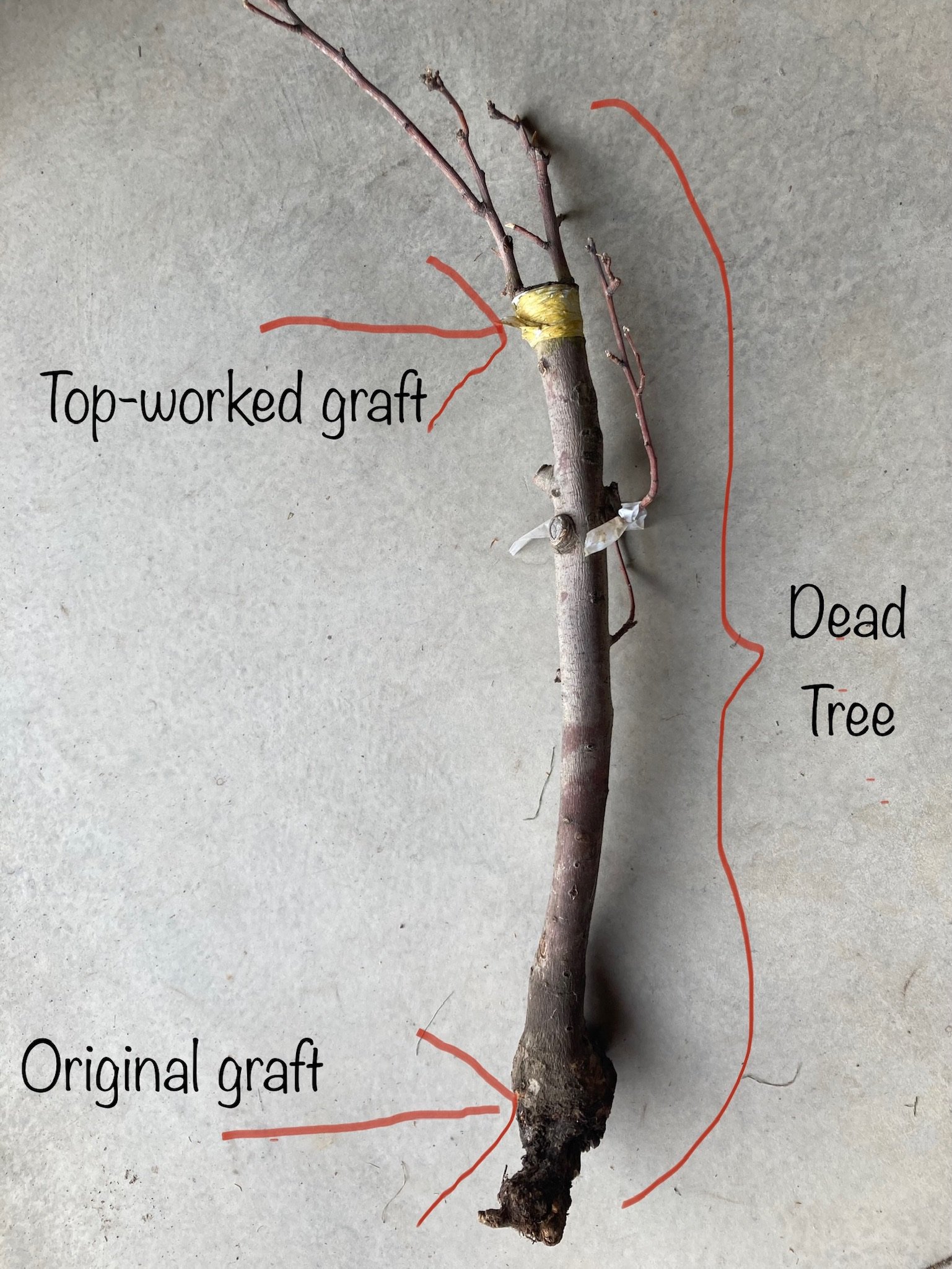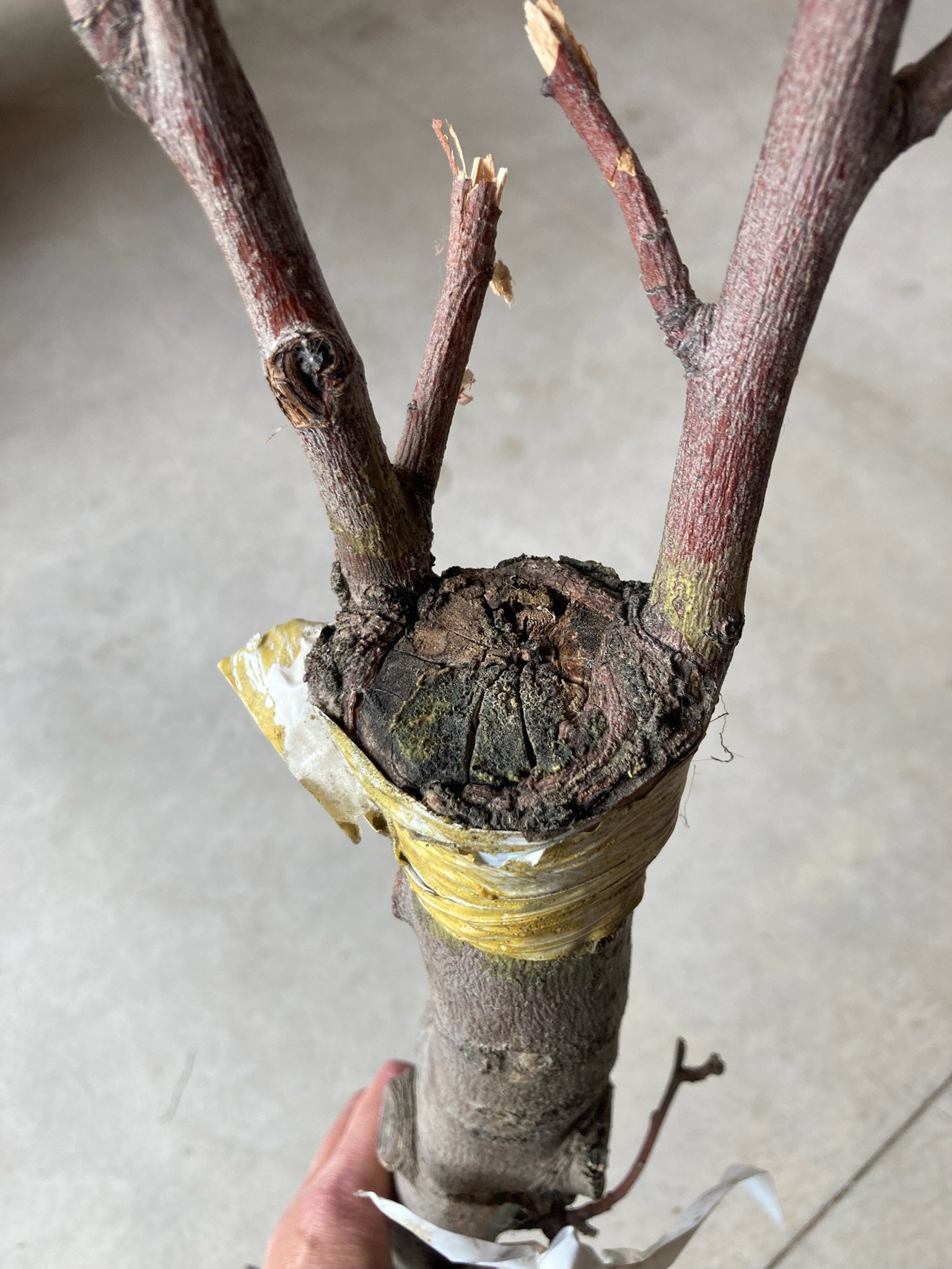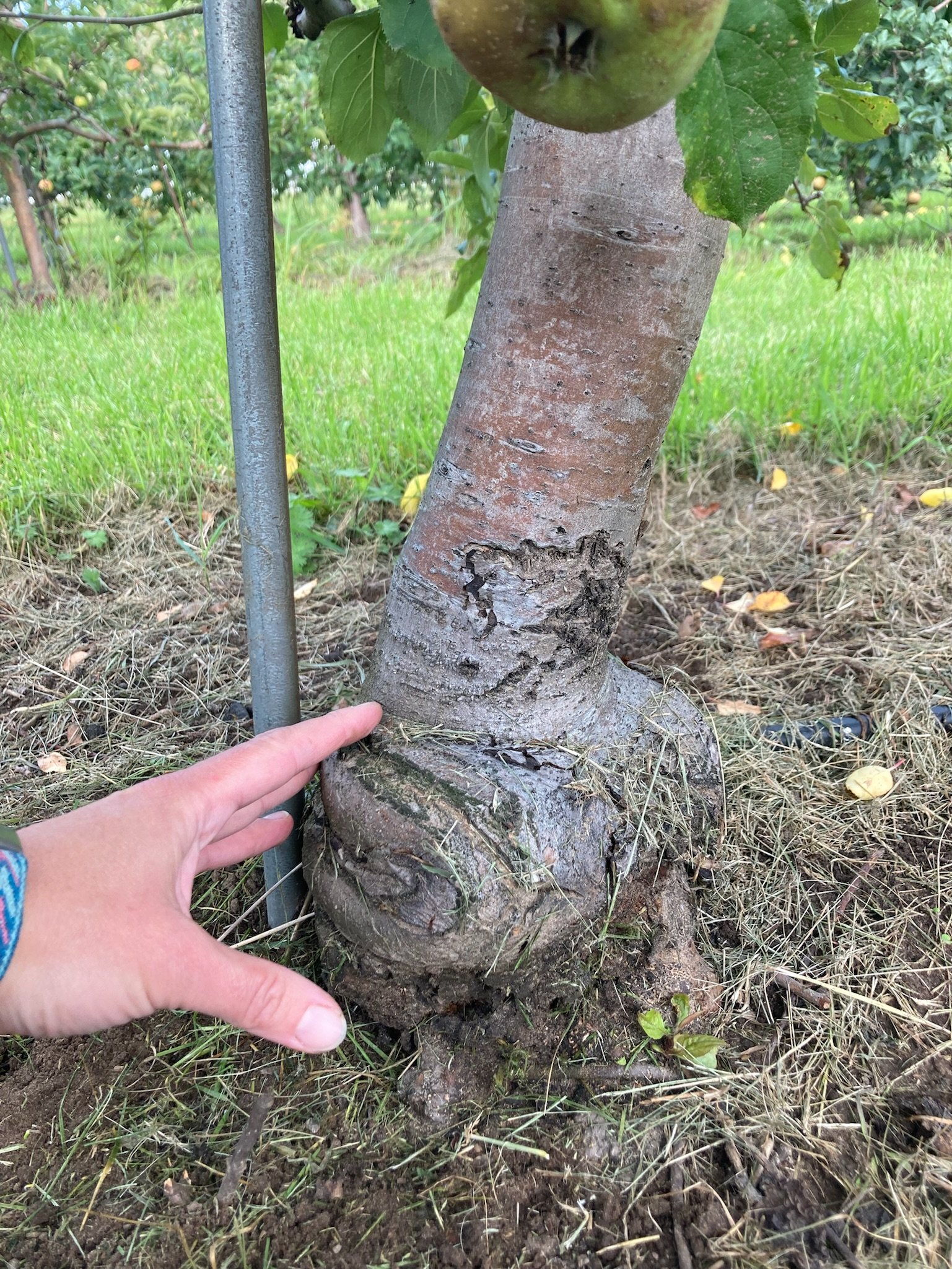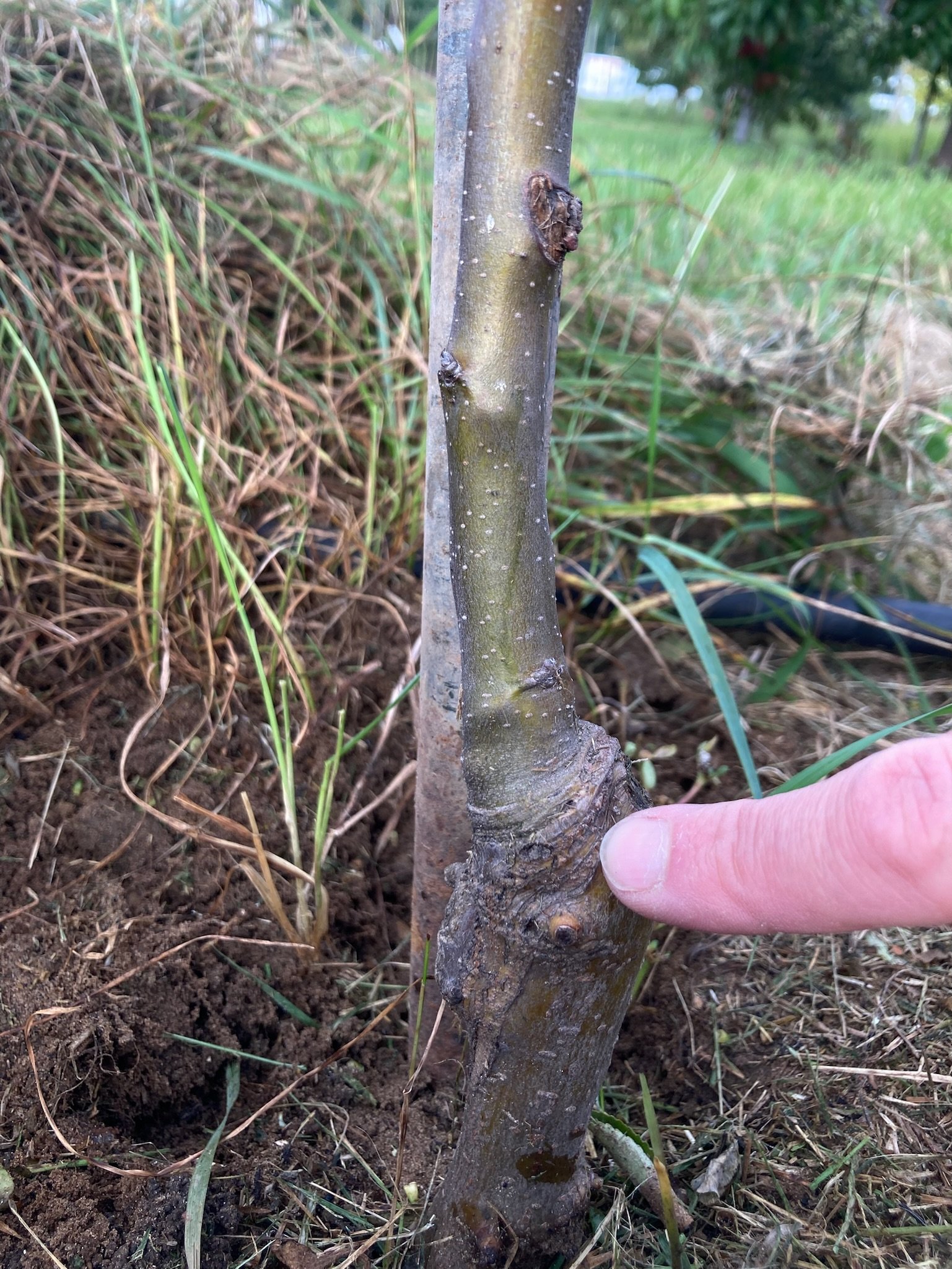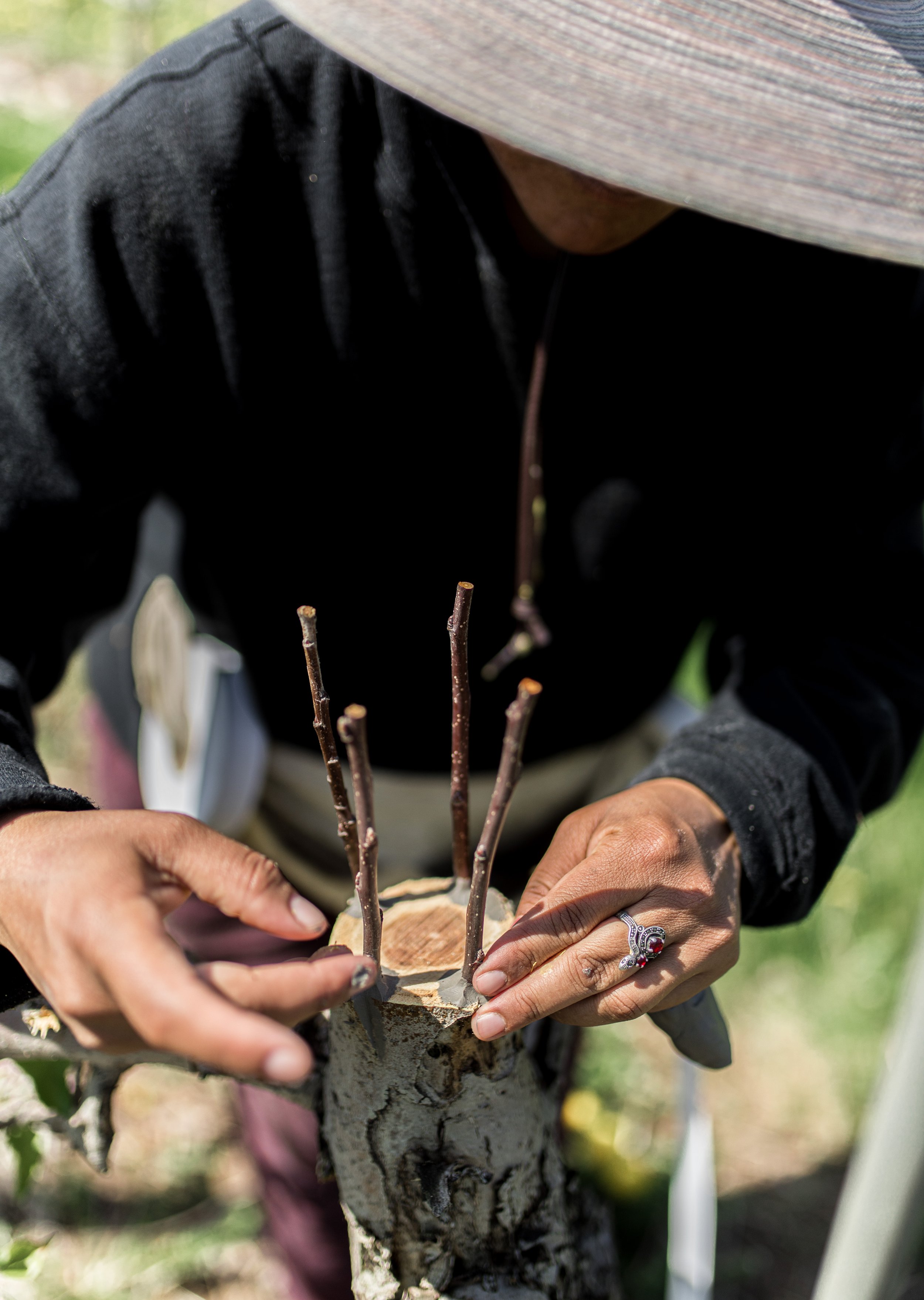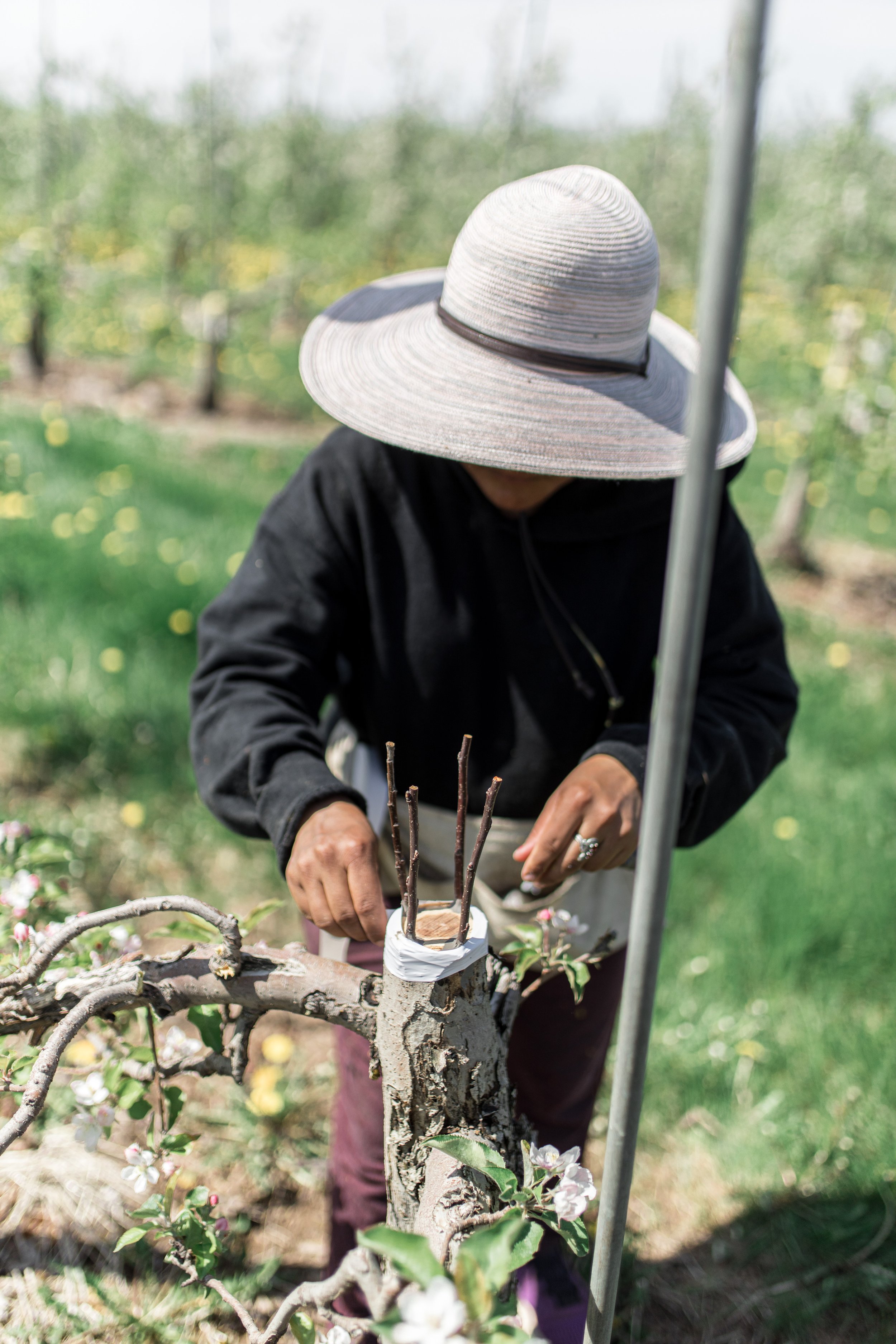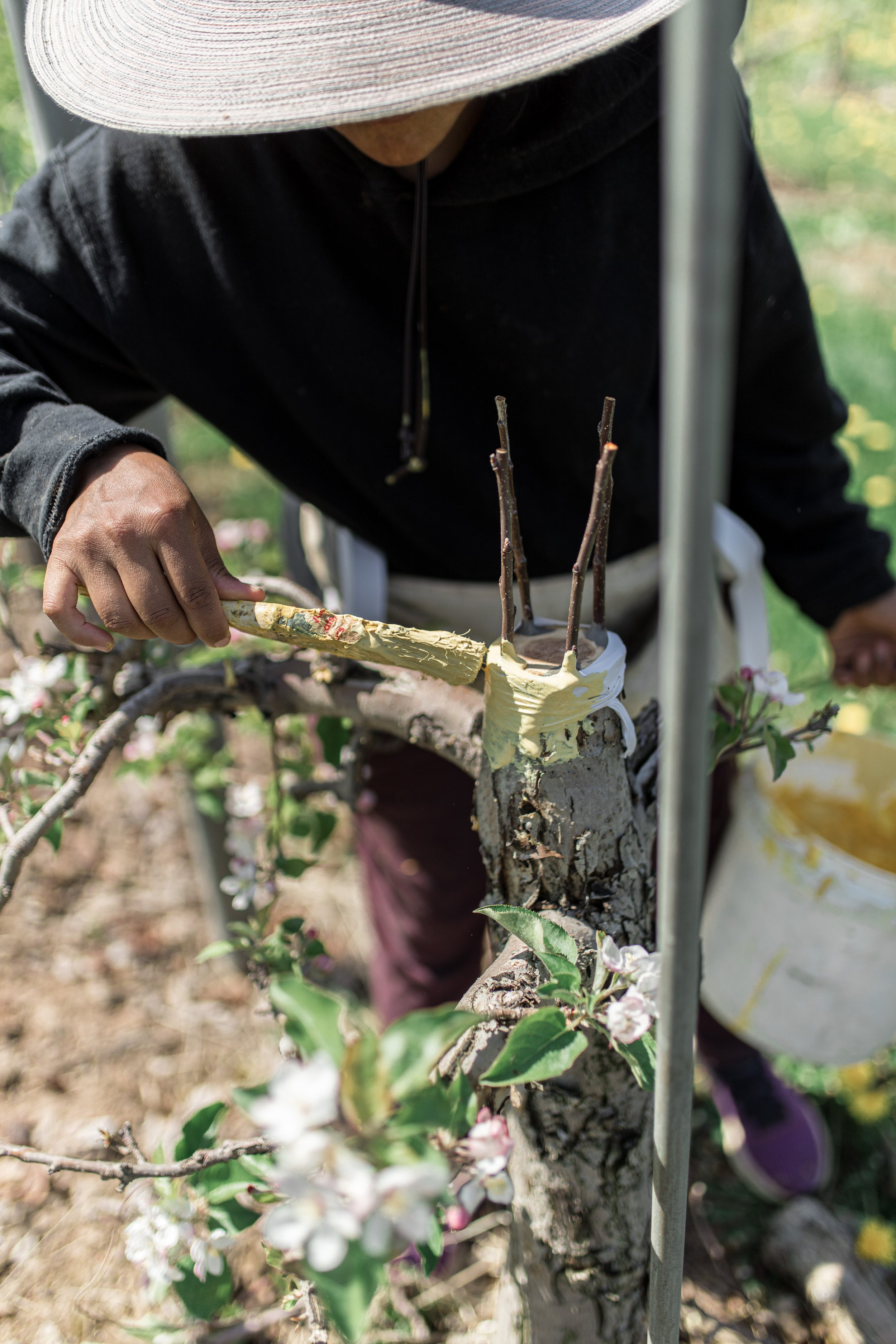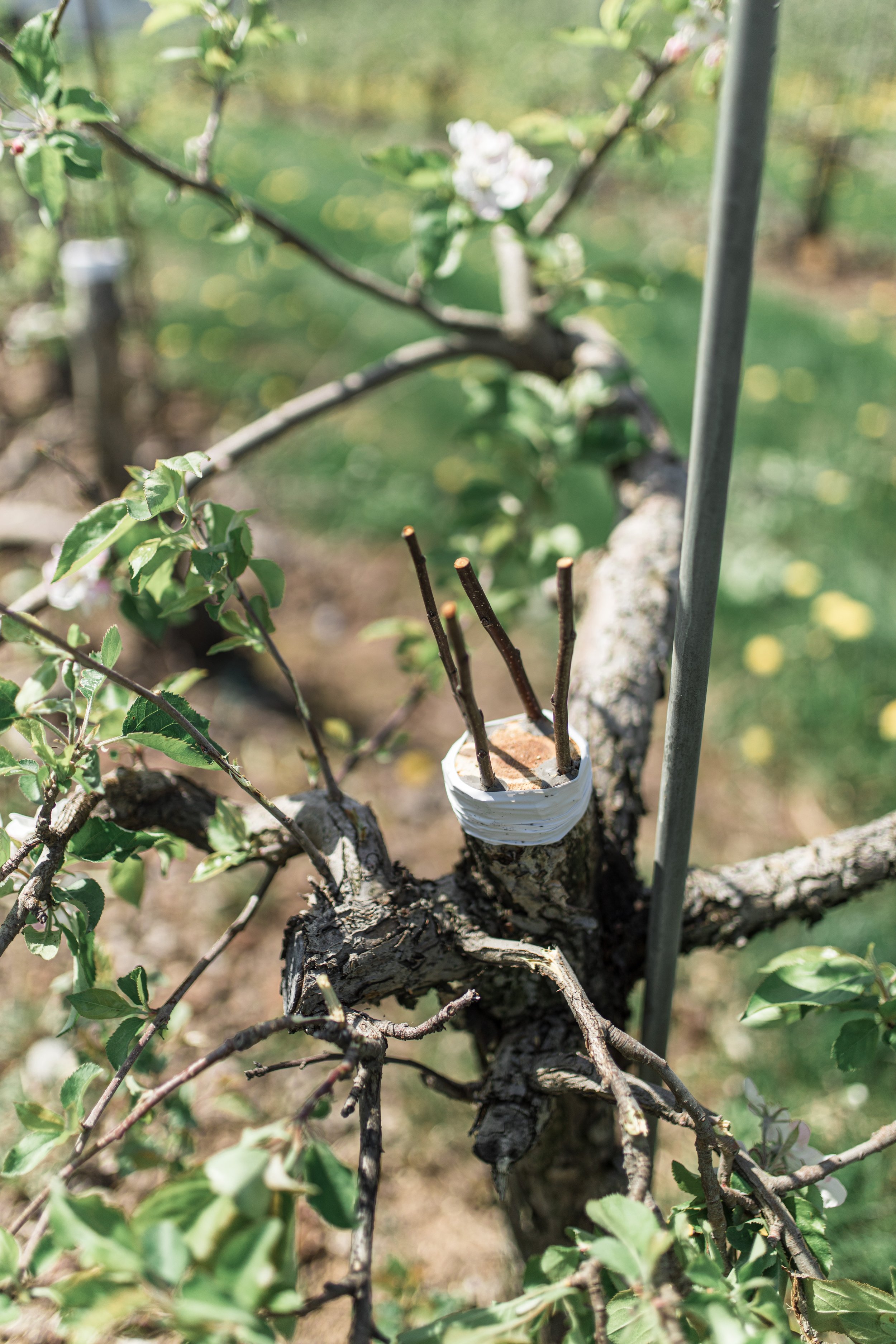Behind the Scenes: Grafting!
Hello again everyone! I left you all with a bit of a cliffhanger in my last post, and I know you’ve all been anxiously waiting all week to find out just how apple trees are produced, so I’m just going to dive right in and tell you…
If planting an apple seed will give you an apple tree with completely unique apples, how do we produce apple trees with the same apple varieties that we know we want to grow, market, and eat? The answer is … grafting. Grafting is defined by Brittanica as “ the act of placing a portion of one plant (bud or scion) into or on a stem, root, or branch of another (stock) in such a way that a union will be formed and the partners will continue to grow.” Grafting has been around for thousands of years - there are records of grafting being a common practice in texts from ancient China, Greece, and the Roman Empire. Today, grafting is most commonly used for the production of fruit trees, but it’s also a technique frequently used in landscape trees, ornamental plants, and even some vegetable plants.
There are many reasons why grafting a plant might be useful: to repair damaged plant tissue, to produce certain plant forms (weeping cherry trees, dwarf fruit trees), to increase productivity (a grafted plant can flower and produce fruit in much less time than a natural seedling), and to reproduce a certain species or variety of plant. Apple trees are grafted, first and foremost, for the latter reason – to reproduce a desired variety.
So let’s go back to our example of Honeycrisp from my last post. It’s a delicious apple! It’s a best-selling apple! Farmers want to grow more Honeycrisp apple trees! Now, we know we can’t plant a bunch of seeds from Honeycrisp apples into our new orchard and expect to get a bunch of Honeycrisp trees to grow. In order to get more Honeycrisp trees, we need to go to a KNOWN Honeycrisp tree and cut a few branches. These branches are now considered the scion wood, or the desired variety for our graft. Now, we take our branches to ANOTHER completely separate apple tree, typically the rootstock. Using grafting techniques, we can now make a small opening in the rootstock bark and insert either the entire branch of Honeycrisp or even just a small bud. The opening in the rootstock bark doesn’t go deep, all of the functional tissues of the tree (the pipelines for water and sugar conduction) lie just below the bark surface. Essentially what we are doing is lining up the pipelines of the rootstock with the pipelines of the scion wood. The cut surfaces of each separate plant will eventually heal together, the pipelines (they’re called xylem and phloem if you want to really get plant nerdy!) connect and now energy, water, and nutrients coming up from the rootstock will flow into the inserted scion wood and it will begin to grow and thrive! As the grafted branch continues to grow, we remove any branches from the rootstock and now all the energy coming up from the roots is going directly into our Honeycrisp scion and … voila! … we have a new Honeycrisp tree!
This has been done for every single Honeycrisp tree growing on this planet today. Every single Honeycrisp tree is a graft of a graft… of a graft, of a graft, of a graft of a graft of a graft of a graft (etc) of the original seedling Honeycrisp tree developed at the University of Minnesota in 1962. And it has been done for EVERY apple variety that has ever existed as more than one tree. Most apple varieties originated as chance seedlings, usually nothing special, until someone tasted something special and decided, “This is a good apple! Other people might want this apple! I’m going to name it and start grafting it.” That’s most likely how almost all of the 350+ varieties in our Upick Orchard originated. In the last 50 years or so, some universities have been trying to create exceptional apple varieties by using controlled crosses to get the next best apple on the market (I’ll talk more about THAT later).
Nowadays at LynOaken Farms, we often purchase our new trees already grafted, but we’ve been fortunate to have family and employees skilled enough to graft onsite, granting us the ability to create new trees or convert no longer marketable varieties right here on our own farm. If we really wanted to, we could graft a new variety onto every single branch of a tree – giving us one single tree with 20+ varieties of apples growing on it!
Grafting is amazing and incredible and truly a wonder of nature. Through grafting, we’re able to taste varieties of fruit that have been around since the Roman Empire, the Middle Ages, the Industrial Revolution, the Roaring 20’s, and beyond! It is biology and precision, science and art.
Just the other day, I sat my teenage U-Pick employees down to explain this amazing process. And as they sat listening to me, blinking in perhaps confusion about what I was trying to say and why the heck I was so excited about it, I saw the light bulb switch in one of their eyes. She said, “so basically, you stick a stick into a stick?” And then it was me blinking. Because after I had explained everything to them in the exact way I just wrote out for you, I realized, yeah, at the core, it really is as simple as- you stick a stick into a stick to grow more sticks. I might use that analogy more often…
Hoping you’re enjoying fall as much as I am!
All my best, Katie

